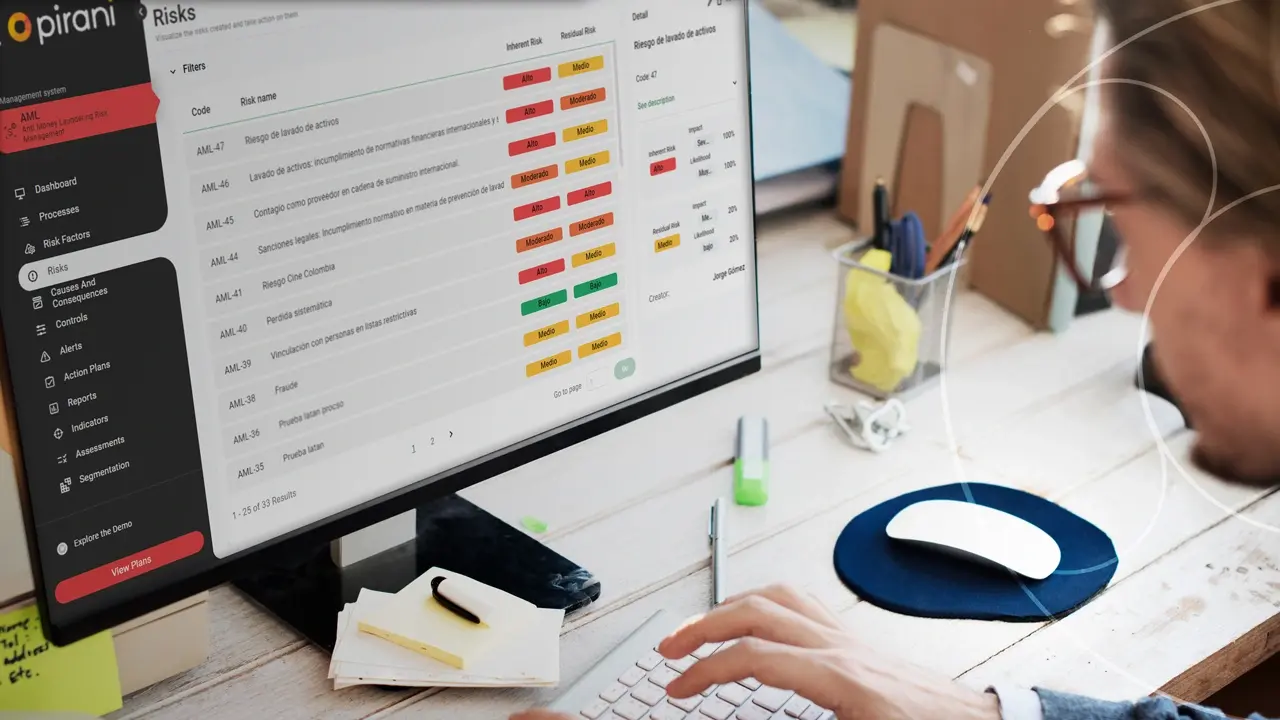Money laundering and terrorism financing risks

Money laundering and terrorism financing jeopardize the stability of an organization. Learn about the main risks of these crimes here.
Money laundering is a process that consists of performing a series of economic, financial and commercial transactions in order to incorporate illicit earnings in legitimate circuits. Terrorism financing, in turn, is any form of economic or material support for terrorist groups. Both practices entail risks that can result in losses for your organization.
Therefore, in order to develop a good system for the prevention of money laundering and terrorism financing it is essential to recognize the possible risks to which a company is exposed.
Here we explain the main risks of money laundering and terrorism financing.
Reputational Risk
It is the risk driven by the discredit, bad image or negative publicity of an organization. When this risk materializes, its consequences can range from a loss of customers to a decrease in company revenue or even being subject to legal proceedings.
Legal Risk
It occurs when an entity is sanctioned, fined or required to pay compensations for having failed to comply with rules, regulations or contractual obligations.
Risk of Contagion
It refers to the possible reputational, legal or economic impact that a company may suffer when it is linked to the action or experience of an associated actor.
Of course, there are economic activities that are more likely to be used for ML/TF. Corporations, foundations or non-profit entities are the most susceptible, along with politically exposed persons (PEPs) and entities engaged in high-risk economic operations.
It is essential to have a system for the prevention of money laundering and terrorism financing because entities that do not establish measures to avoid being impacted by this type of crime may incur in three main risks that seriously affect their operation.
In addition to the risks of money laundering and terrorism financing that we have already mentioned, these practices also cause effects that harm not just one organization but society as a whole:
○ They enable drug traffickers, terrorists, illegal arms dealers or corrupt public officials to operate and extend their illicit activities.
○ They gain a competitive advantage that makes it difficult, if not impossible, for legitimate businesses to compete with those that combine the proceeds of illicit activities with legitimate funds.
○ They can cause liquidity problems in the institutions of the financial system, due to the unexpected entry and subsequent withdrawal of large sums of money.
○ They distort the supply of goods and services. They also generate unexplained changes in money demand, instability around international capital flows, interest rates and exchange rates, which makes the implementation of sound economic policy difficult.
○ Government tax revenues decrease and therefore, indirectly harm honest taxpayers, which means higher tax rates to cover the fiscal deficit (smuggling, tax fraud).
○ They damage the country's reputation and that of its financial institutions, which diminishes opportunities for sustainable development.
○ They reinforce the belief in the profitability of crime, which encourages its realization and further rise, with the increase in social harm (harm to people, social fear, medical expenses, security and replacement of property). In the end, this reduces citizens' ability to save and thus, their economic wellbeing.
It is for these reasons that entities are responsible for identifying the activities and financial sources of their customers, as well as determining the characteristics of the transactions they carry out.
In this sense, methods such as customer segmentation, processes such as KYC (Know your costumer) or the management of unusual transactions are good practices to prevent the risks of money laundering and terrorism financing.
You May Also Like
These Related Stories

These are the lessons of the Interbolsa case

What are the methods for money laundering?

Ozark, a Netflix series to understand money laundering

How to manage the risk of natural disasters in companies?

Phases that are implemented in Sarlaft


No Comments Yet
Let us know what you think